The UK Ministry of Defence (MoD) announced on 12 April 2024 that it will install the UK DragonFire laser directed-energy weapon (LDEW) – developed by MBDA in conjunction with Leonardo UK, QinetiQ and the UK’s Defence Science and Technology Laboratory (Dstl) – on Royal Navy warships.
The installation of the weapon will take place from 2027 – far quicker than previously envisaged, thanks to new defence procurement model that has just come into force. Laser weapons were originally expected to be rolled out to UK armed forces in 2032.
“In a more dangerous world our approach to procurement is shifting with it. We need to be more urgent, more critical and more global,” said UK Defence Secretary Grant Shapps in announcing the initiative. “Our widespread reforms will deliver the latest kit and weaponry for our armed forces faster and help identify export opportunities that can boost the UK economy.
“DragonFire shows the best of the UK at the forefront of military technology, and we will not delay in getting it in the hands of our military to face down the threats we’re facing,” Shapps added.
On 19 January 2024 the UK MoD announced that the DragonFire LDEW demonstrator had successfully conducted firing trials against aerial targets at a range in the Hebrides.
On 5 March, meanwhile, Peter Cooper, Dstl’s principal LDEW advisor, told select journalists at Dstl’s Porton Down facility that DragonFire represents a “step change in UK high-energy laser systems” and that the team was “now at the stage of understanding the art of the possible” regarding the system.
The next stages of DragonFire’s development will include further live firings and the manufacture and installation of weapon systems onto Royal Navy platforms, the MoD stated.
The UK DragonFire programme leverages MBDA’s decades of weapon system manufacturing expertise, Leonardo’s position as a world-leading authority in laser technology, electro-optics and advanced targeting, and QinetiQ’s experience as the only UK company to successfully develop and safely operate high-energy laser sources in the UK along with coherent beam-combining technology.
DragonFire has been developed through a GBP 100 million (EUR 117 million) joint investment by industry and the UK MoD, working with Dstl. MBDA noted that the MoD’s decision to progress the programme “ensures that the companies involved can retain, maintain and grow the critical hi-tech skills, knowledge and jobs that contribute to the UK economy”, adding that “future exports of DragonFire to the UK’s allies will further support these benefits”.
DragonFire has the potential to be a long-term, low-cost alternative to certain tasks missiles currently carry out. The system uses a 50 kW-class laser to deliver its effect, with its performance said by the development team to be ‘equivalent to hitting a GBP 1 coin from kilometres away’, all while the target is moving at speed –with the platform possibly also moving – and while delivering enough dwell time on the targeted point to deliver an effect.
While the DragonFire LDEW has a number of potential applications, the decision to initially field the system on Royal Navy warships is viewed as being the most practical. Larger naval platforms place relatively few size, weight and power restrictions on the system, while the LDEW itself can be deployed against multiple kinds of target. CGI video footage of the envisaged system in action, first shown at Porton Down on 5 March, showed a warship-based DragonFire installation both shooting down an unmanned aerial vehicle and disabling the engine of a fast attack craft-type vessel.
The employment of an LDEW in a maritime environment also places fewer restrictions on its use in terms of negating any possible effects of collateral damage to anything beyond the intended target.
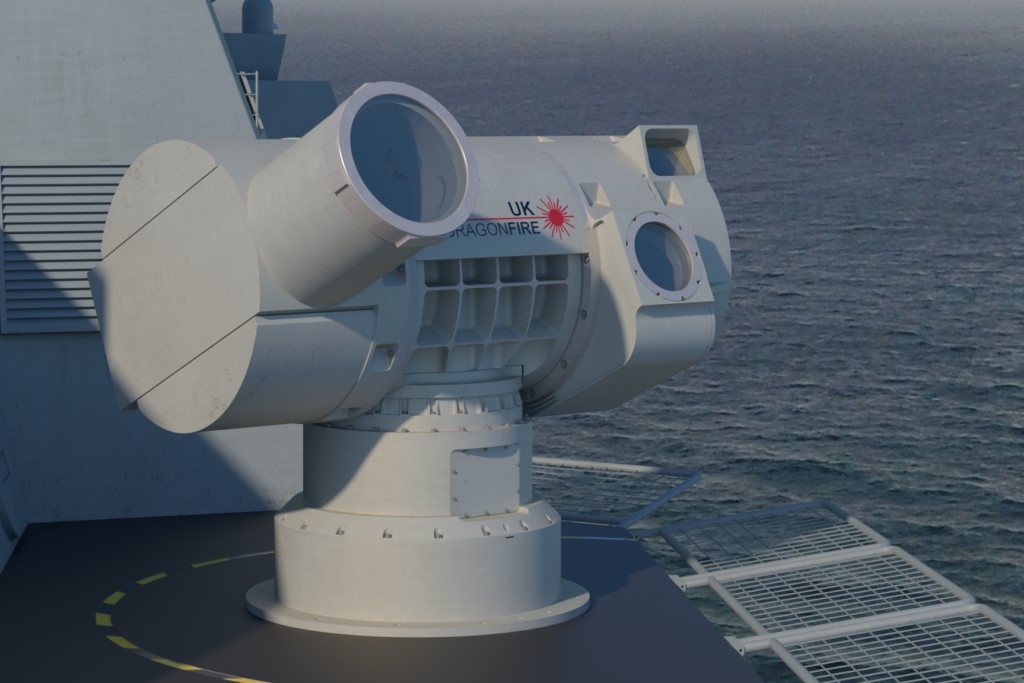





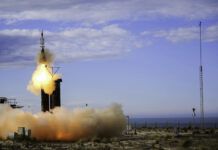

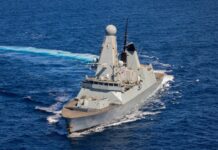

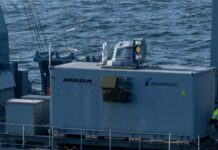
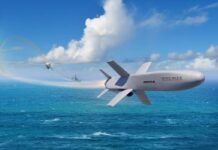
![Dual-use offensive/defensive interceptors: Panacea or chimera? An SM-6 missile is launched from the USS John Paul Jones (DDG 53) during Flight Test Standard Missile-27 Event 2 (FTM-27 E2) on 29 August 2017. [MDA/Latonja Martin]](https://euro-sd.com/wp-content/uploads/2025/09/SM-6-Launch_MDALatonja-Martin-Kopie-218x150.jpg)

